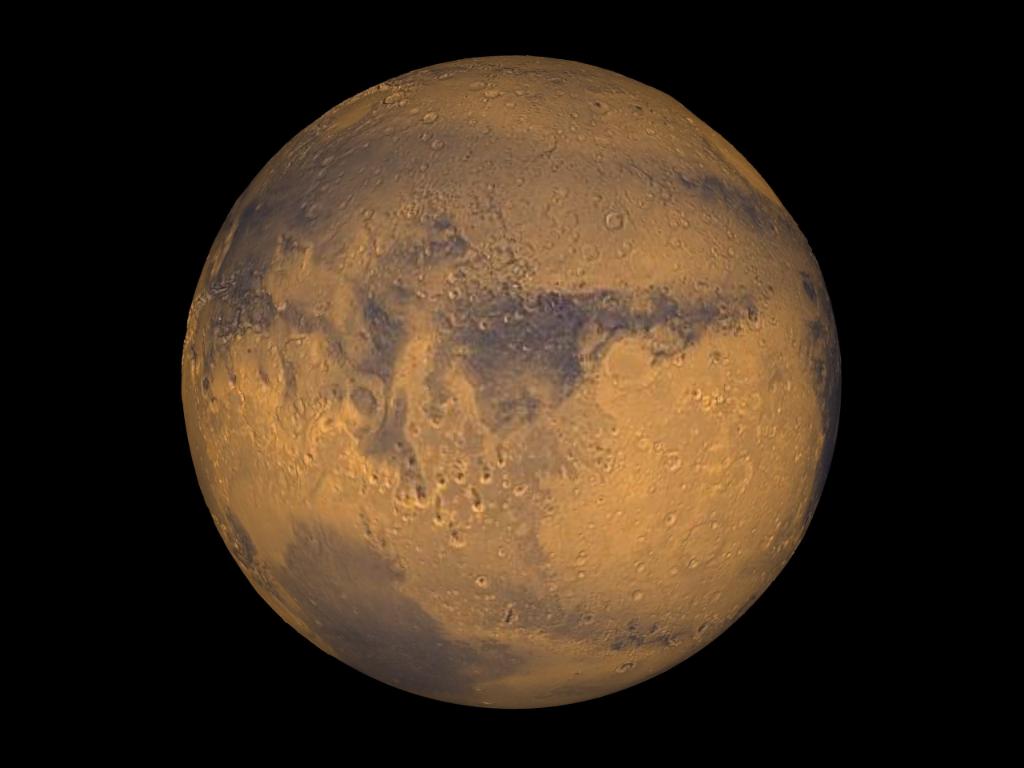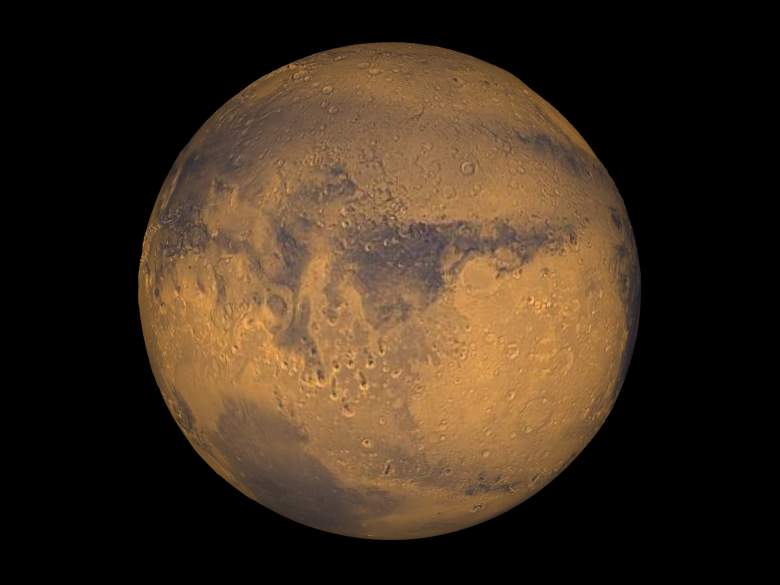
Many are speculating that NASA’s big announcement on Monday will be that Mars has flowing water. (NASA/Greg Shirah)
NASA has announced that it’s solved a major Mars mystery and some are speculating that this could mean that Mars has flowing water, maybe even an ocean, underneath the surface. In a very cryptic press release, NASA announced that it would share a big revelation about Mars on Monday during a livestream press conference. A look at the scientists who will be leading that press conference provides tantalizing clues about the nature of the big Martian mystery that’s finally been solved.
Here’s what you need to know.
1. NASA Has Solved a Major Mars Mystery
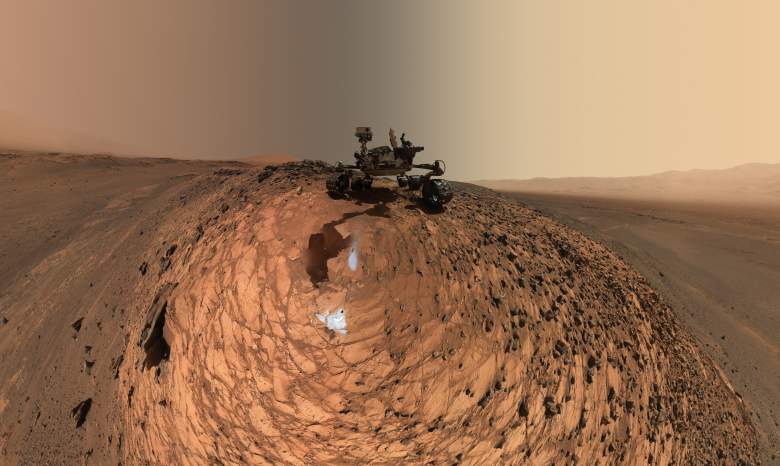
This photo shows NASA’s Curiosity Mars rover collecting drill samples. Many are speculating that NASA’s big announcement will be that there’s flowing water or even an ocean on Mars. (NASA)
The press release that’s gotten so much attention simply reads: “NASA to Announce Mars Mystery Solved.” The announcement goes on to say that a “major science finding” is going to be revealed on Monday at the NASA headquarters in Washington. It will be followed up by a brief question-and-answer session. But the real clues can be found in who will be leading the press conference: Lujendra Ojha of the Georgia Institute of Technology in Atlanta, Jim Green the director of planetary science at NASA, Michael Meyer the lead scientist of the Mars Exploration Program, Mary Beth Wilhelm of Georgia IT and NASA’s Ames Research Center, and Alfred McEwen of the University of Arizona in Tucson.
2. The Experts Leading the Press Conference Provide a Big Clue

Lujendra Ojha is one of the scientists leading the press conference. Did he find flowing water on Mars? (Georgia Tech profile page)
Lujendra Ojha, one of the experts leading the press conference, may provide the biggest clue about NASA’s announcement. In 2011, when he was just 21, he made worldwide headlines when he discovered that pictures of Mars’ craters might show evidence that liquid salt water flowed on Mars during its warmer months, Business Insider reported. He co-authored a study that was published in the prestigious journal Science. His paper was written with Alfred McEwen, CNN reported back in 2011, and McEwen is another expert who will be leading the press conference.
Ojha and McEwen authored a paper in Nature Geoscience in 2013 that furthered this theory. The paper discusses how observed dark markings on sloping Mars terrains could show that water currently flows on Mars during the warmer months. This may even suggest “surprisingly abundant liquid water” near the Martian equator.
3. Here’s What We Know About Water on Mars So Far
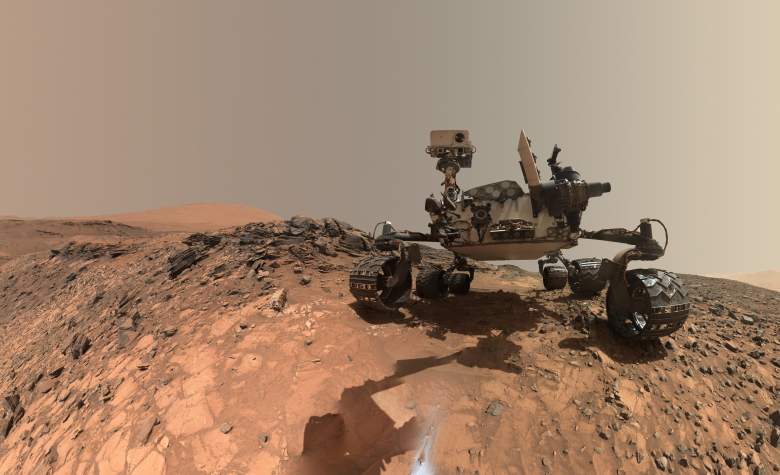
The Mars Curiosity rover explores Mount Sharp on Mars in this selfie from the rover. Could there be water on the planet? (NASA)
This won’t be the first time that NASA has made a discovery related to water on Mars. The planet’s surface shows that at one point in its distant history, it may have had rivers and oceans that eventually permanently evaporated due to weak gravity and a thin atmosphere, Inverse reported. Nearly 40 years ago, we learned that Mars has polar ice caps that are two miles thick and hold its remaining water. But missions to Mars over the last 15 years or so have given hints of something more. As Inverse reported, this includes patches of Martian soil dug up in 2008 that hinted at vaporizing water and climate changes studied in 2010 that showed evidence of subsurface water. And Mars Curiosity, in 2013, discovered there was 2 percent water in every cubic foot of Martian soil. Martian soil is damp with liquid brine, which lowers the freezing point and makes liquid water a much more feasible concept, Express reported.
But all this could be minor compared to a potential bigger discovery. Jupiter’s moon, Europa, has evidence of an ocean beneath its surface. NASA has said there is liquid water on Enceladus. Could Mars have an ocean beneath its surface?
4. Other Theories About Monday’s Announcement Are Wilder, Even Ranging to Finding Life
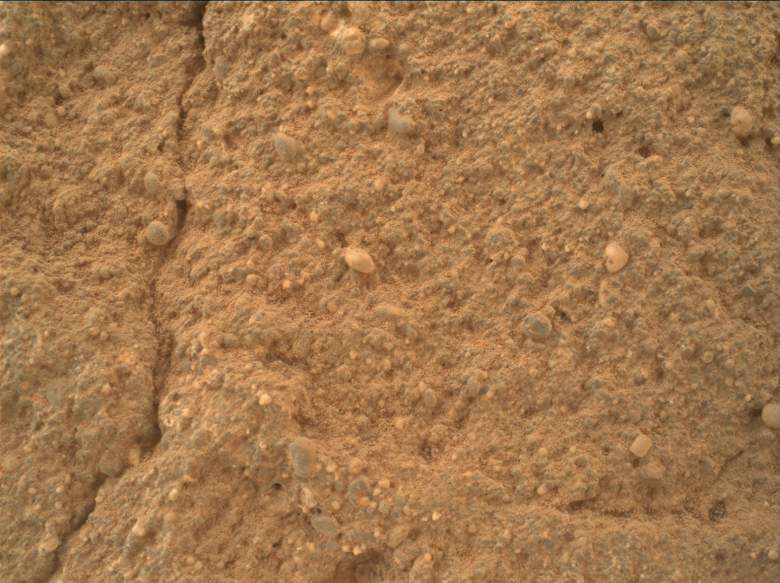
This closeup of Martian sandstone, taken in May 2015, looks dry and arid. But Mars could be hiding a watery secret. (NASA)
Back when the story of Ojha’s discovery first broke, Ojha said that if there really was water on Mars, there might also be life on Mars. Some people are speculating (or maybe, more accurately, fervently hoping) that NASA’s announcement won’t just be about water on Mars, it will be about life on Mars.
In a discussion on Reddit, some people have even wilder speculations. One commenter said he never forgot the earth-shattering announcement that NASA bragged about in 2012, but never actually made. Popsci reported back then that Mars Curiosity’s principal investigator was saying they had made an earthshaking discovery that was going to be “one for the history books.” Ten days later, The Blaze and other media were reporting that NASA was downplaying the announcement and saying it was just about two-mile thick polar ice caps. On Reddit, some commenters think there really was a huge discovery, perhaps life or or even alien tech or alien plastic, but they decided to keep quiet about it.
5. Here’s How to Watch the Press Conference Live
If you want to watch the press conference live, it will be broadcast on NASA Television and on NASA’s website. According to NASA’s TV schedule, the news conference will be broadcast on all channels, NTV-1 (public), NTV-2 (education), and NTV-3 (media). These channels can be accessed on Satellite AMC-18C and the specific parameters for the downlinks can be found the NASA TV webpage here.
In addition, you can watch NASA TV via a U-Stream livestream on its website here. Access the site a little early, because it may take awhile to load on your computer depending on your Internet speed.
The news conference will take place Monday, September 28 at 11:30 am EST.
Read more about this discovery on Mars in Spanish at AhoraMismo.com:



